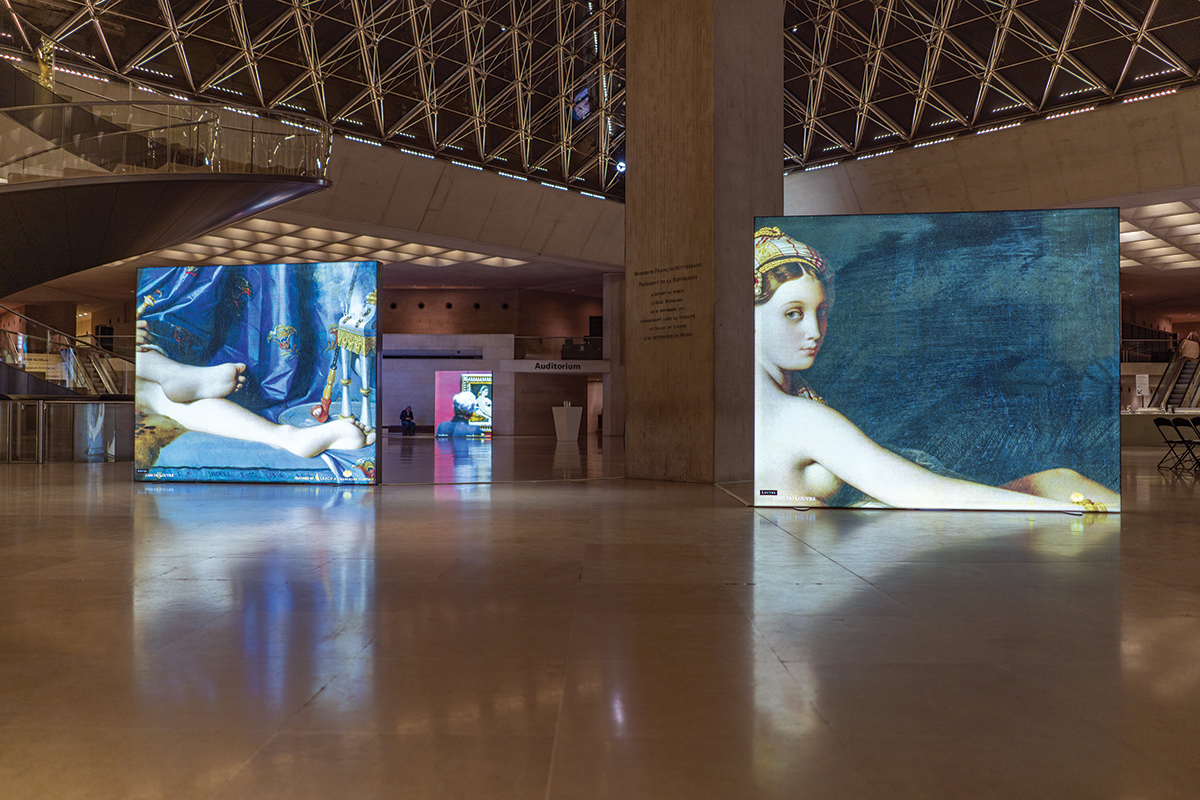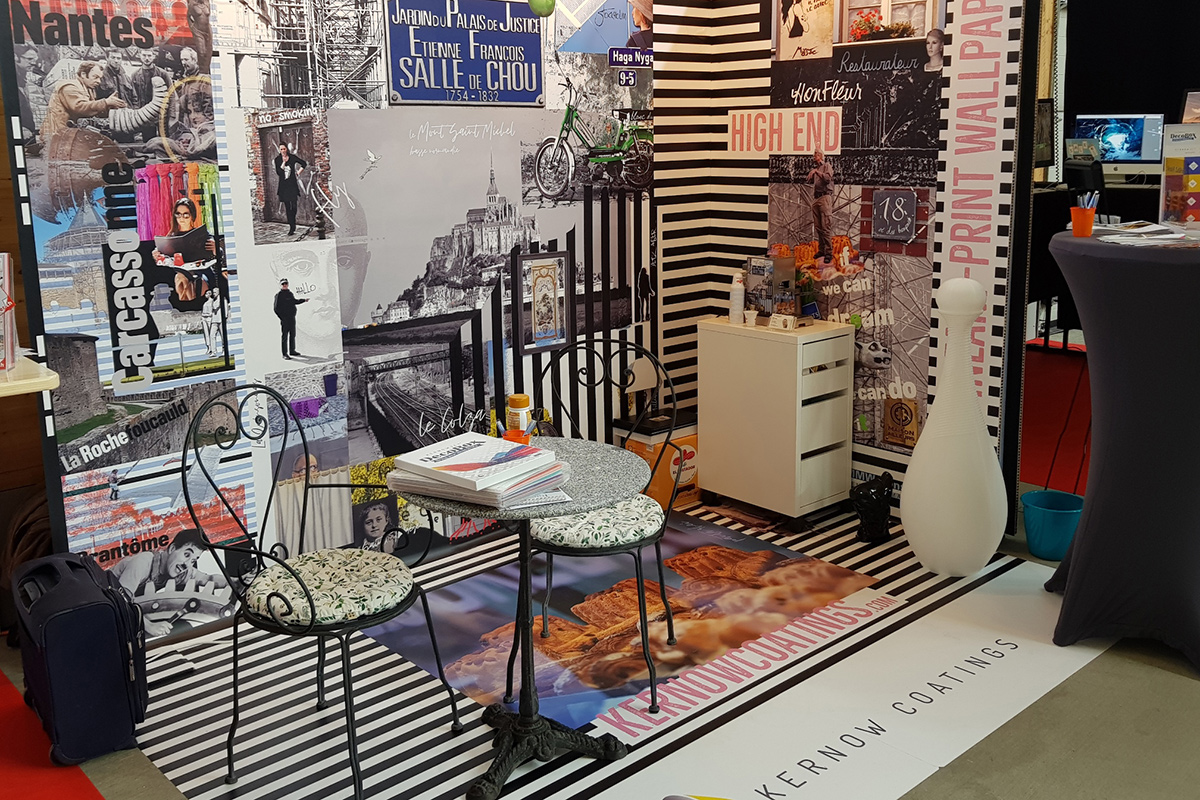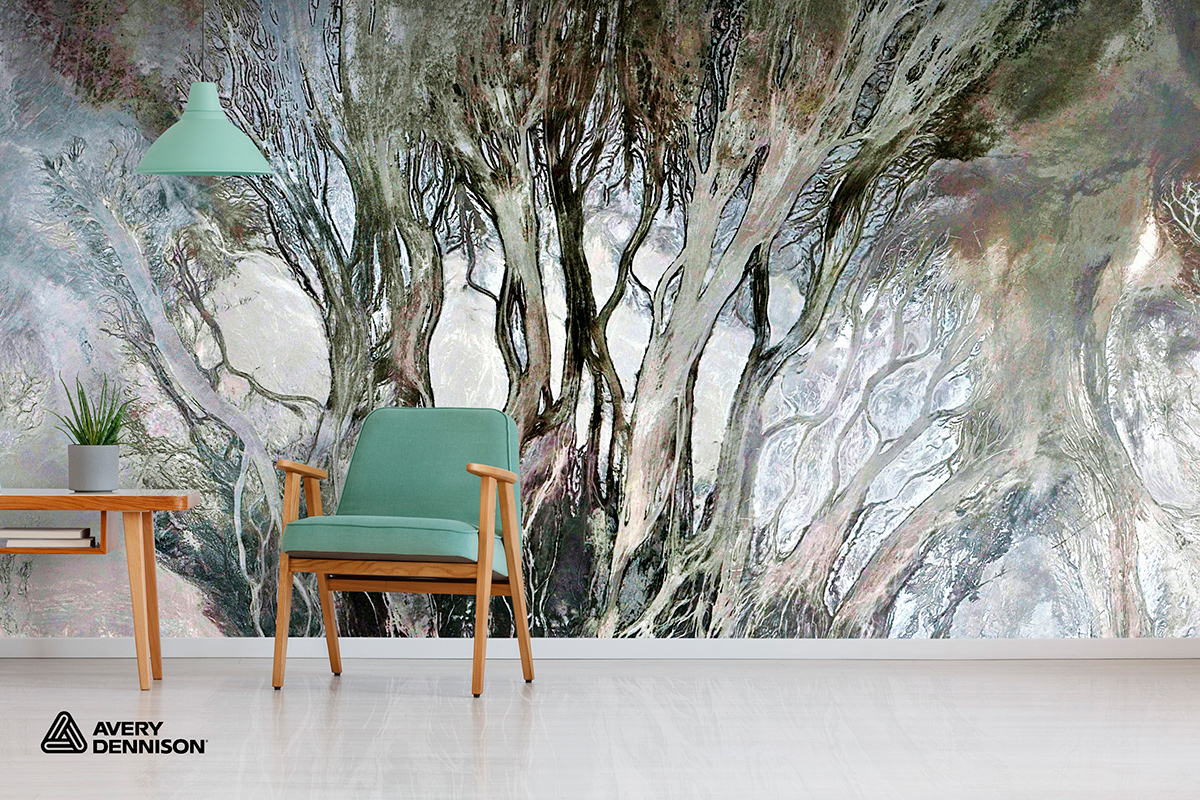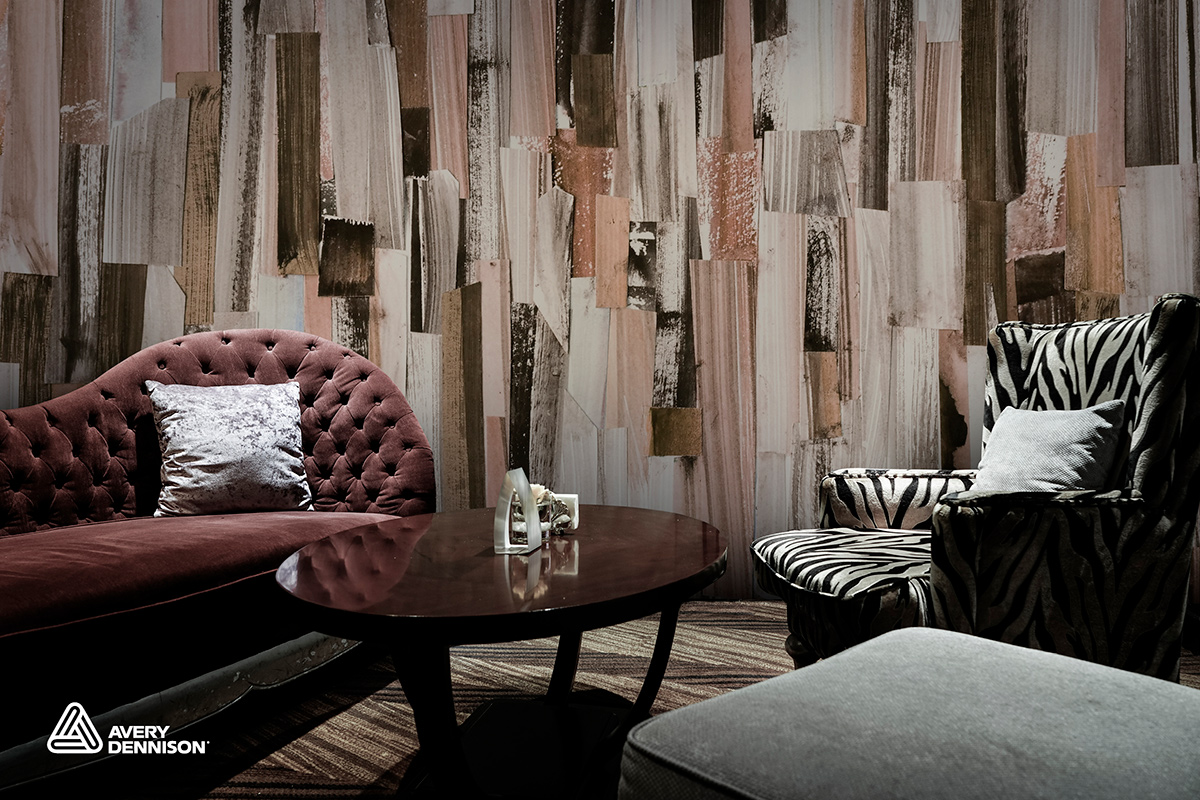Textiles and environment - they are the two watchwords when it comes to key developments in digitally printable substrates. So have the manufacturers/distributors got the focus right?
At the start of 2019, when Image Reports conducted its annual Widthwise poll of the UK/Ireland large-format PSPs, 11.74% of the 247 respondents said general banners/ flags/signage was proving the fastest growing part of their wide-format business - far ahead of the other job application areas. Far fewer - 3.24% - said textile printing specifically for banners/flags was the fastest growing part of their business but, when asked which areas they planned to move into over the next two years, 5.26% said textile printing of banners/flags - the biggest area of movement (even though textile/dye-sub printers were still relatively low down the investment wish list).
When it came to asking how important it is to offer ‘green’ print options nowadays, 46.15% of the responding PSPs said more so than it was two years ago, but 31.17% said no change - it was still unimportant - and 15.38% said it had become even less important!
It’s a complicated landscape, so how is the fact that media/substrate manufacturers and stockists are focusing so much on textiles and eco options impacting you - and have they got it right?
Take Soyang. In the last issue we ran an article on how Soyang Europe is collaborating with waste/recycling firm Blue Castle to deliver the print sector a PVC Banner Recycling Scheme. According to Tim Egerton, sales manager at Soyang Europe, “there’s pressure being placed on substrate manufacturers and distributors to meet the eco-demands of the end users as well as an ethical movement taking place to ‘green up’ their acts.
“At Soyang Europe, we’re taking steps to towards a circular supply chain, with our partnership with Blue Castle, but re-using and recycling at Soyang extends beyond this, in particular with the development of new green textiles from our own factories in China and also our European partners.”
There’s that watchword ‘textiles’, and you can expect to see it a lot more throughout this feature. So many media developers and stockists have picked up on reports - like the oft quoted ‘The Future of Digital Textile Printing to 2023’ from Smithers Pira - that forecast tremendous growth and therefore money-making opportunities. Needless to say that’s where a lot of focus is being placed, though that’s not necessarily always going to benefit you.
You know CMYUK, the independent supplier of large-format digital printers, cutting equipment and media - it’s the exclusive distributor in the UK and Ireland of materials from Pongs and in the UK from Berger. Well, according to MD Robin East: “In five years’ time I think our revenue will have doubled - and that will be down to textiles. The growth could be even more than that if you look at all the technical and market indicators. The opportunity is immense.”
Currently around half of CMYUK’s revenue comes from equipment sales, and the other half from materials. “We have seen year-on-year turnover growth as a whole within the company for some time, but in the last four years - when we’ve had a focus on large-format textiles - we’ve seen a 50% growth year-on-year in the materials business,” says East, who admits that making the most of this opportunity is about more than servicing CMYUK’s ‘traditional’ large-format client base, where the increase in demand for things like tension frames is boosting the move towards fabric-based printed products. He notes: “Our strategy to develop revenue has to include reaching new emerging markets - and digitally printed textiles is our focus.
“Over the next five years we’ll see lots of development and the market will change significantly. We’ll start to see short-runs for interior décor certainly, and that may be via existing digital PSPs, or via analogue textile producers switching to digital kit. Or will designers bring digital print in-house? And I think we’ll see a new breed of specialist décor print PSPs too. However it pans out, the growth is going to be massive - if you look at the food chain, kit and materials manufacturers and distributors are working hard at demonstrating the possibilities to all sides. We’re not taking our eye off the ball with sign/graphics, after all, we’re in the same food chain, but we have to be entrepreneurial - and so do our customers.”
Becoming greener is also high on the list of must-do’s. CMYUK is introducing an Eco range of substrates that includes backlit, display and wall cover textiles, all of which, are manufactured from yarn developed by using recycled pet plastic bottles that would otherwise have entered the waste stream.
This new range of accredited materials has recently passed the ‘safe for incineration’ process. In concert with this, CMYUK will soon launch a closed-loop process with a leading environmental company, providing full circle services to remove its accredited materials and produce local energy sources within the UK.
“Textiles are already more environmentally-friendly as they are PVC free,” says CMYUK’s commercial director Michael Crook. “But what people forget is that part of the make-up of the textile is the coating, and in order for that to be environmentally-friendly, the coatings and the process of manufacturing need to be environmentally-friendly too. In order for these textiles to be recycled and reused again or incinerated to produce energy, everything within has to be green and clean. This consideration forms part of our new Eco offering.”
Customarily cost has been a factor in the lack of take-up when it comes to ‘green’ products but CMYUK says it is putting together alternative green solutions closer to the price of historically used materials.
“Textiles are the main part of our materials business,“ says Crook, pointing out that polyesters have seen the biggest growth in market share, largely down to developments in the fabrics, some of which can now mimic natural fabrics, are inherently flame retardant, and with recycled threads starting to break through. “Digital printing is opening totally new markets and these are within reach for both our traditional customers and new clients,” he stresses.

Taking you back to Soyang, it too is offering new, improved and environmentally friendly printable textiles options. Developed by its partners at Senfa, Sublimis is a backlit fabric made from 100% polyester and suitable for printing with both direct and transfer dye-sublimation as well as UV curable inks. Also new is Altimis, with all the benefits of Sublimis but with extended eco credentials as it’s manufactured from 100% recycled yarn. It is then coated with Senfa’s smooth finish and comes with fire-retardancy certification.
Also new from the Senfa stable is Alterra, a backlit fabric based on the well-know Decoprint Perar but including recycled fibres. It is PVC-free and suitable for use with UV and latex inks.
“At Soyang Europe, we see great opportunity for further development of products that incorporate recycled yarn in their construction. It’s an obvious manufacturing process to aim for and as that grows one would naturally expect that general costs will start to reduce too.
As more textiles manufactured from recycled yarn become available there is also the need to echo the typical current curve of offering it at 5m widths, further extending its use to outdoor media such as building wraps and large mesh installations. Equally, advancing ink compatibility to ensure a wide range of hardware can be utilised is an obvious next step in the development cycle,” says Egerton.
He adds: “All of this simply reinforces the ethical importance of committing to corporate social responsibility and making better use of the raw materials we have available.”
What else is new?
Antalis
Since launching Xanita (a sustainably engineered fibreboard made with fibres recovered from recycled paper products) to the UK market earlier this year, Antalis says it has seen a surge in visual communications customers looking for sustainable media. Nautilus was introduced this summer and is a 100% recycled uncoated paper and board manufactured by Mondi.
Triaprint is the latest edition to the sustainable range and is a 100% recyclable polypropelyne product being sold as an environmentally friendly alternative to foam PVC, foam board and other rigid plastics.
Emball’Iso-M2
The Airplac foam board factory in Leigh on Sea launched a new substrate in 2019. It is made of 100% polystyrene foam, and is 100% recyclable. The foam is extra dense in order to rigidify the panel for print and POS applications. The waterproof, lightweight panel has a smooth white surface for UV digital printing, is pH neutral and has an anti-static agent.
It comes in all sizes up to 1524 x 3050mm. The standard thickness is 10mm but 5mm is available on request. It can be cut using laser technology, hot wire machines or flatbed cutting machines.
By the way, all of Emball’Iso -M2’s production waste is compacted and sent for recycling in its German partner company Isopor.
Inktec
According to Peter Davidson, head of IP consumable sales at InkTec Europe: “The market for repositionable window and wall graphic media for retail and event applications alongside other temporary graphic applications, is continuing to grow and the drive to reduce the use of PVC products and the desire to recycle means more conscientious businesses are keen to offer and include this feature into their offerings.”
To that end it has introduced several polyester-based repositionable clear and white window films in the last 12 months. The most recent is Tex-Ra, an opaque self-adhesive fabric made of 100% polyester and with a textured surface.
Also new is an anti-scratch, silver back, block out banner of rigid polyester/polypropylene construction that can be printed with aqueous, dye, pigment and latex inks.
Kernow
WallShark from Kernow is a self-adhesive, PVC-free, and scratch resistant film introduced this year and developed from the floor graphics film FloorShark, using the same shark-skin ink-receptive technology. It has ben developed to look like a high-end quality traditional wallcovering and can be printed with all types of wide format inks.
Kernow has also developed two wide-format metallic ranges, Metalik Cut&Print and Metalik Inkjet, available in silver, gold and rose-gold. They are PVC-free and printable with solvent, eco-solvent, UV-curable and latex inks.
Metalik Cut&Print has the same metallised colour on both sides and has a removable adhesive. MetaliK Inkjet is mainly designed for lamination of larger areas on any smooth substrates. It can be applied on aluminium composite panels like Dibond, before or after printing, or directly applied on walls.

William Smith
In response to what it sees as the fast growing décor market, the company has added two newcomers to the Avery Dennison MPI 8000 Wall Film Series - now known as the Interior Design Collection.
MPI 8826 is a white textile film with lustre canvas finish and high-tack adhesive that is printable with eco/solvent, latex and UV technology. MPI 8520 is a white matt finish paper with a permanent adhesive and which is also printable with latex and UV technology. Both products are PVC free and MPI 8520 is also FSC certified.


Profile picker
Drytac has created thousands of ICC profiles for its digital media based on popular printer models, inks and Rips and added them to its revamped Drytac.com website.
Over 1,800 Drytac media profiles have been created by the Mimaki colour engineering team at the printer manufacturer’s headquarters in Japan. These profiles are compatible with Mimaki wide-format printers up to 1.6m and including print-and-cut, eco-solvent and UV technologies. The profile selection also covers all the ink configurations available, such as SS2, ES3 eco-solvent inks and LUS 170, LUS 175 and LUS 200 series UV-LED inks, and all ink sets-up including CMYKCMYK, CMYKLcLm, and special colours. In addition, there are profiles for both white and clear inks for all Mimaki UV machines for multi-layer printing.
The Drytac profile collection also comprises nearly 30 HP Latex certifications, profiles and machine settings on the PrintOS portal, which includes profiles for the new R Series printer; a wide range from the Roland Profile Centre, which includes all Eco-Sol Max ink types for VersaCamm and TrueVis systems, including the latest models; profiles for OKI ColorPainter; and profiles for Fujifilm Acuity LED 1600 II, for both the Caldera and ColorGate Rip platforms.
Drytac is also expanding the range of colour profiles and settings on the Epson Connect cloud service. A complete range of profiles for the new Ricoh Latex Pro devices, in particular combining Drytac’s clear products and Ricoh’s new white latex ink technology, is coming soon.
Drytac is also working with Caldera, ColorGate, Onyx and providers of local Rips included with devices, such as Roland Versaworks and Mimaki Rasterlink. “Through working in tandem with printer and software manufacturers, we have made literally thousands of profiles accessible via our website,” Shaun Holdom, global product manager at Drytac. “The selection is being constantly updated and, additionally, we have the in-house capability to provide custom profiles as required.”

